Wearable health monitoring devices are becoming more and more popular as a result of customer’s increased desire to live a healthy lifestyle and take responsibility for their well-being. The availability of these devices is increasing while their features and use are being improved due to developments in biosensor technology, software development, and battery performance. In this article, we will discuss wearable health monitoring devices, the benefits of wearing them, and their applications.
What is Wearable Healthcare Technology?
Fitbits and smartwatches are examples of electronic devices that can be worn on the body and are regarded as wearable technology. Wearable medical devices are made to collect information about users’ health and exercise. They can even convey a patient’s health data in real-time to a physician or other healthcare expert.
Reason To Use Wearable Health Monitoring Devices
Tracking your health is important. So, using a healthcare monitoring device will track your information automatically. They are easy to use, and anyone can share your health data on your behalf with your healthcare expert. Most devices can measure sleep patterns, heart rate, and activity and store them in a smartwatch or phone. Even though there are a lot of improvements in healthcare technology, it cannot measure blood pressure. Your health is very important, and our devices should provide accurate data. So, choosing the best medical technology is important for the overall performance of wearable medical devices.
Sensors Used in Wearable Healthcare Technology
Biosensors are used in medical technologies to collect accurate patient health data. These sensors use biological molecules like enzymes to measure particular elements like glucose, cholesterol, medicines, or health information like heart rate, blood pressure, or breathing rate. Biological, chemical, or physical signals are detected by biosensors, which then transform them into measurable electrical or optical signals.
Two types of biosensors are used in wearable medical devices:
CMOS Sensors: The CMOS is well-known for its accuracy and intelligence. The CMOS sensor can accurately direct its focus and even block out other sounds and light that might affect a reading, much like a high-end DSLR camera lens. The CMOS sensor can also detect a common heart ailment called Atrial Fibrillation.
Photodiode Sensor: This sensor converts Light energy into electrical energy. This sensor converts the information from a vein into useful data. It sends back to the wearable device to provide information to the user. Although it is not the most accurate sensor in a medical device, it is a far more affordable choice for manufacturers.
The Benefits of Wearable Devices
Wearable technology holds immense importance in supporting individuals with physical disabilities and benefiting overall health. Health monitoring devices are also important for patients at risk of rapidly worsening conditions or needing medication reminders. Healthcare specialists can monitor patients, detect changes, and provide timely treatment, resulting in increased patient engagement, proactive care, lower healthcare costs, and reduced staff workload. Healthy individuals can benefit from tracking their body’s performance in different environments. A recent Deloitte survey revealed that most US households own smartwatches or fitness trackers, with a significant portion reporting improved health.
Common Wearable Health Monitoring Devices
Though there have been many recent developments in this field, we have selected some of the most important ones now in use, such as consumer appliances and solutions for the healthcare industry.
Smartwatches
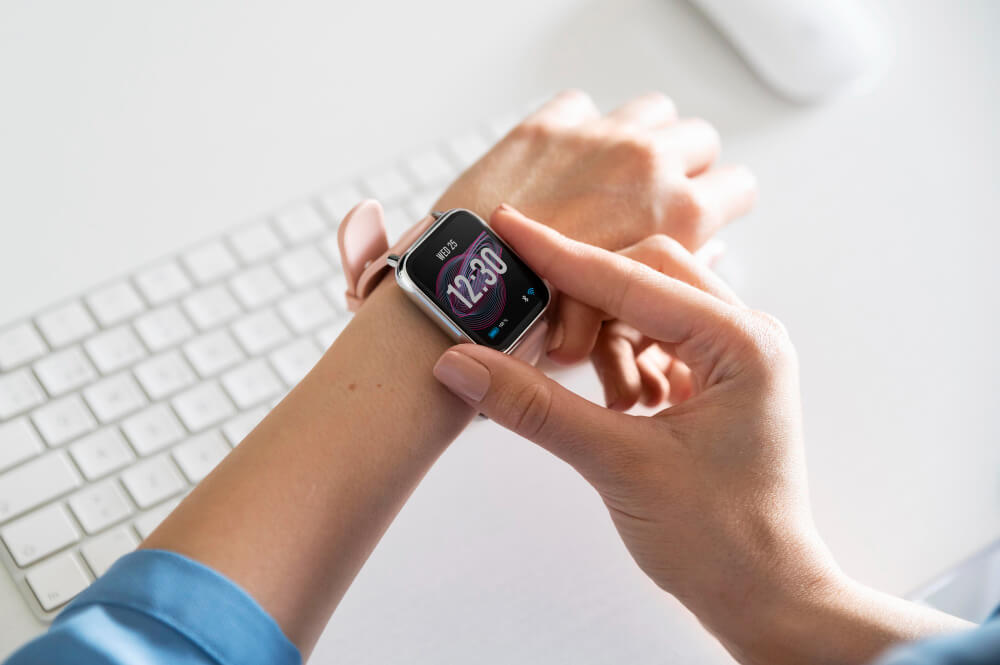
In recent years, smart health watches have developed to combine smartphone-like calling and messaging features with fitness tracker features such as activity, stress, sleep, and heart rhythm monitoring. Today, Smartwatches can detect troubling sickness indicators, alert the user of abnormalities, and send data to healthcare professionals. One popular product in this category that can even deliver Electrocardiogram (ECG) readings is the Apple Watch.
Fitness Trackers
![]()
One of the most popular and affordable types of wearable technology, these small wristbands with built-in sensors are people’s go-to companions for tracking physical activity with tools like a step counter, providing updates on the number of calories burned as a result, monitoring sleeping patterns, and measuring basic health parameters. Fitness trackers often connect with smartphones, allowing users to access and manage the data they collected easily.
Pregnancy Monitors
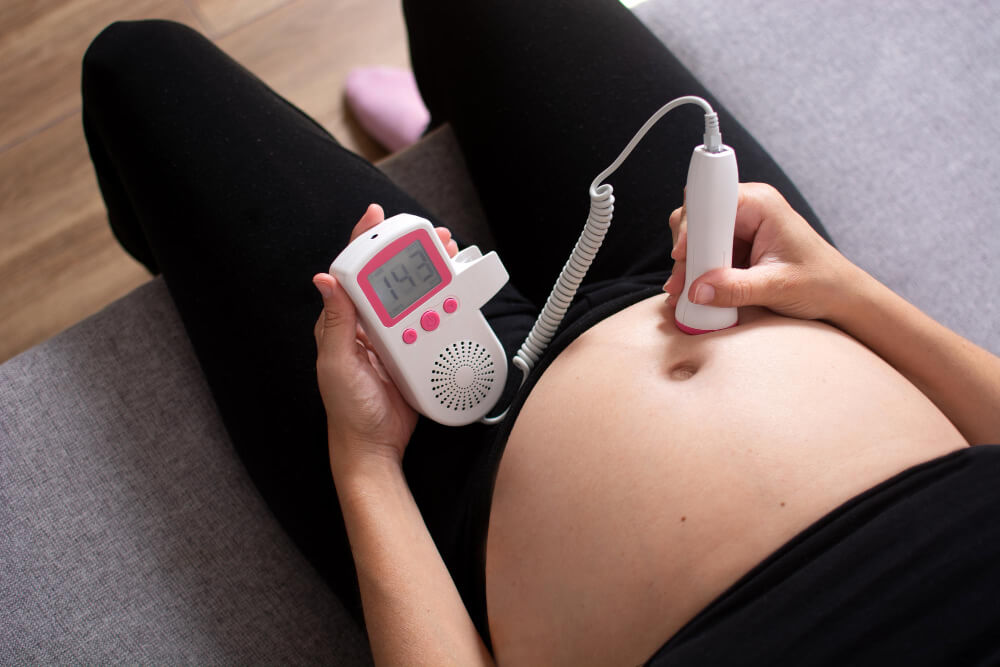
Wearable health monitors have found essential applications in maintaining both mother and newborn’s wellbeing. These gadgets allow healthcare workers to quickly identify issues throughout pregnancy, labor, and later phases. A pregnancy monitor, which continuously records the fetus’ heartbeat and movements, may lower the risk of miscarriage and other issues throughout pregnancy. A newborn monitor can be attached to their foot or ankle to record and share information about a child’s breathing and activity.
ECG Monitors

While smartwatches and activity trackers can be used to monitor heart activity, specialist devices for cardiovascular patients are important to the healthcare system. Modern wearable ECG monitors may detect Arrhythmias in addition to accurately measuring electrocardiograms, and they can send data to doctors or cardiologists for analysis.
Blood Pressure Monitors

People with hypertension or other blood pressure disorders must monitor their blood pressure regularly. Traditionally, this was done with the help of a cuff that was attached to one of the arms. However, modern monitors use more comfortable cuffless technology, allowing the direct transfer of blood pressure readings to a mobile phone app for recording and tracking. Additionally, they can help you understand what is going on by analyzing how the user’s habits affect blood pressure.
Smart Clothing
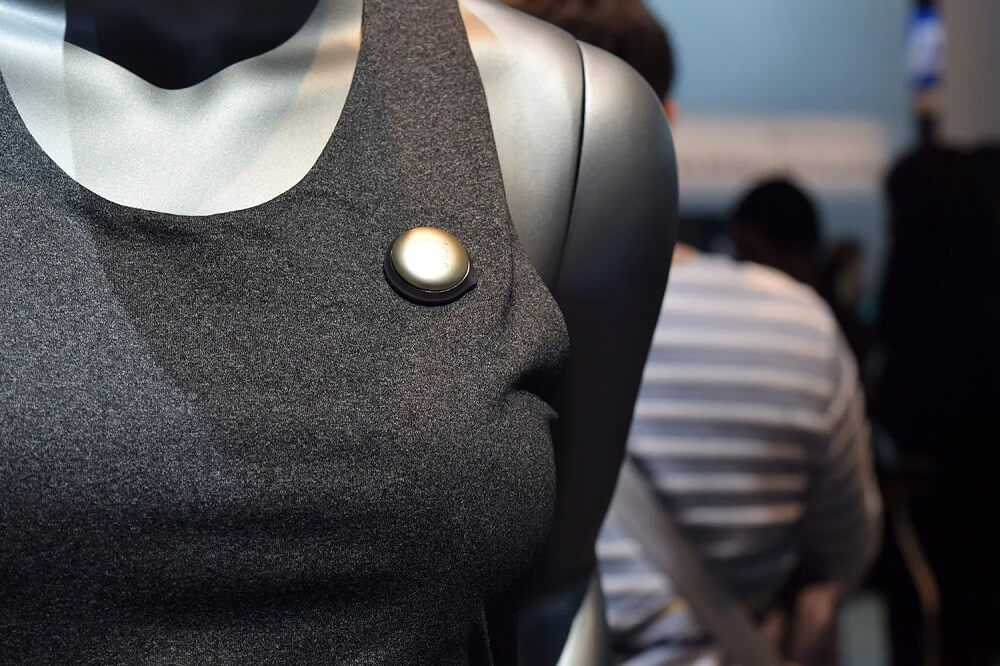
By providing undergarments, clothing, and footwear with sensors incorporated, smart clothing can change healthcare. These sensors monitor various biometric information, such as vital signs, cardiac monitoring, stress levels, and even signs that can enhance healthcare prevention. As more wearable smart clothing becomes available, healthcare professionals may collect important data to make early diagnoses and minimize deaths caused by late identification.
Skin Patches with Biosensors
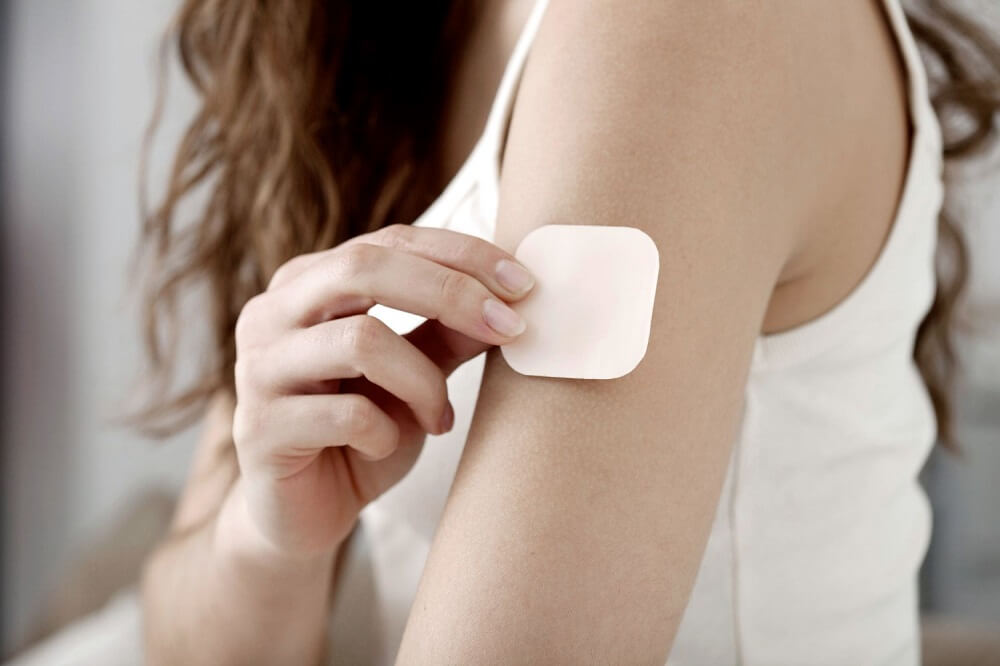
Another wearable technology category that allows convenient and continuous health data monitoring is self-adhesive skin patches with biosensors. They can treat wounds, detect motion, and measure vital signs, including heart and lung function. Biosensors are a versatile wearable technology that effectively prevents cardiac and respiratory arrest.
Hydration and Sweat Sensors
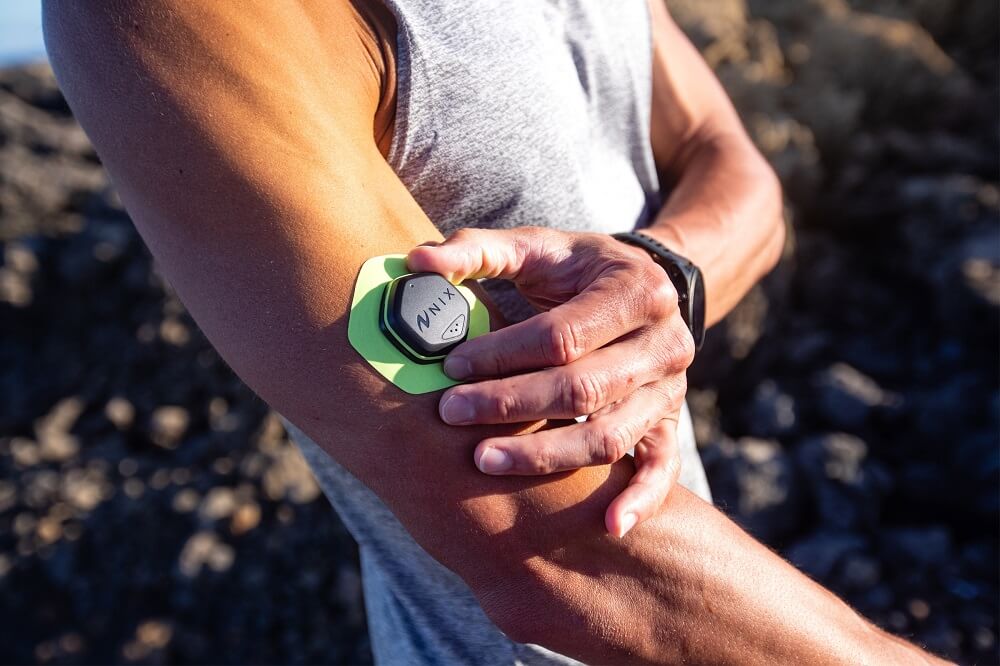
Healthcare professionals can use hydration sensors to keep an eye on individuals who are prone to dehydration or who have problems with their Adrenal glands. People in the biosciences, software development, and sports medicine will likely use these sensors.
Conclusion
Wearable healthcare technology has a bright future. Engineers can give the user the best and most accurate health monitoring using the most accurate sensors and technology. Wearable health technology has an opportunity to transform healthcare by enabling patients to take an active approach to their health and well-being.
